The light early snow settled on the town and the woods, providing a temporary preview of winter months to come. In a few hours, most of the snow had melted. Between the storm's end and the emergence of the sun, however, the snow sat in place for a couple of hours, slowly melting and dripping down from the trees. At this time, the early season snow told me a lot about how the earth holds the summer's heat long after it is gone from the air.
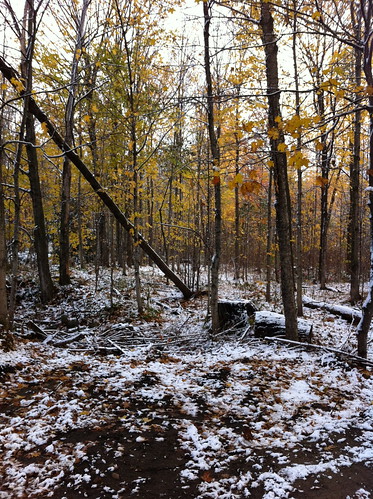
During this snow event, the temperature was near or just above freezing. It was cold enough for snow to stick to surfaces that were as cold as the air, but too warm for it to stick to anything that held any heat. This picnic bench, below, accumulated about an inch of snow, as did the cars parked outside.
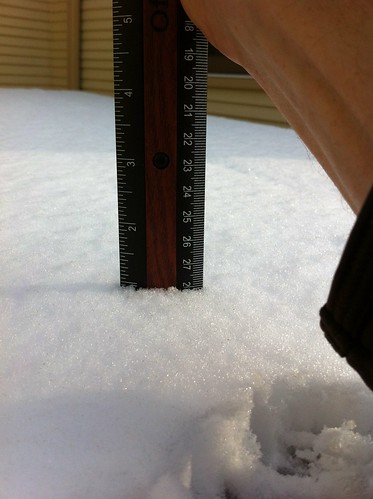
Snow piled on this dead flower stock of Queen Anne's Lace:
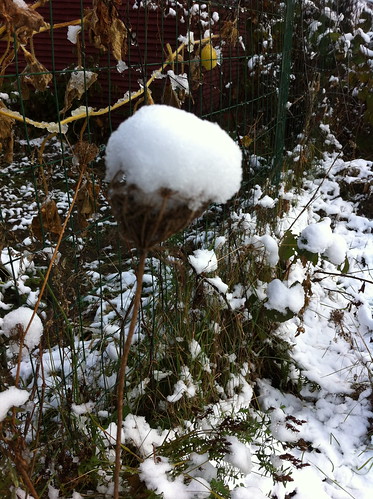
accumulated on this still-attached sycamore leaf:
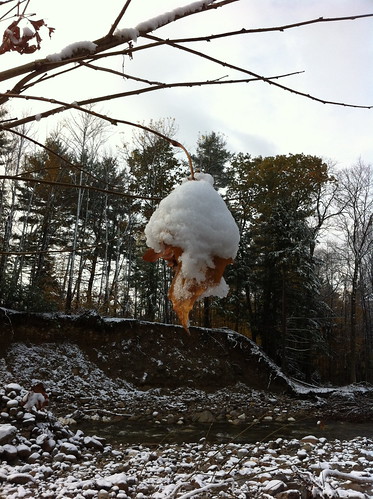
and piled up on these blackberry bushes and nearby grass:
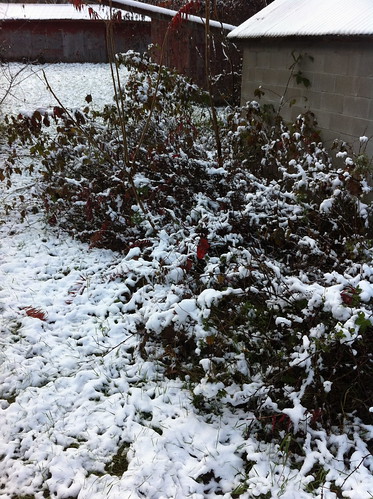
Along the river, little pillows of snow were piled on each cobble.

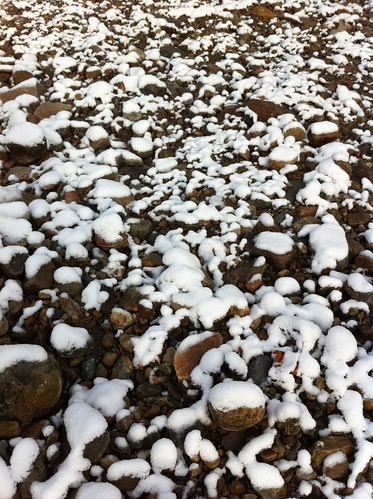
Note that between the small rocks, the ground was bare. The ground holds warmth much longer than the smaller rocks do, and seepage of groundwater near the river may also keep this area snow free. Seeps and springs often remain snow-free well into the winter, because water seeping out of the ground is always near the average yearly temperature, which is above freezing (if it were not, we would have permafrost here). The urban seeps in Burlington remain open for most of the winter (much to the dismay of nearby travelers, because the water currently runs onto walkways and roads and freezes). During the coldest and snowiest periods, they may be buried, but the ground never freezes and an unlucky step here can plunge you into deep mud - no minor thing when it is below zero outside.
The Middlebury River is cold, and even in midsummer the water holds quite a chill. Still, in fall, the river is often warmer than the air temperature, and pure running water does not drop below freezing. The water temperature at this time is probably in the upper 40s or lower 50s - much wamer than freezing. Thus, the river held enough heat to keep the areas next to it ice-free:
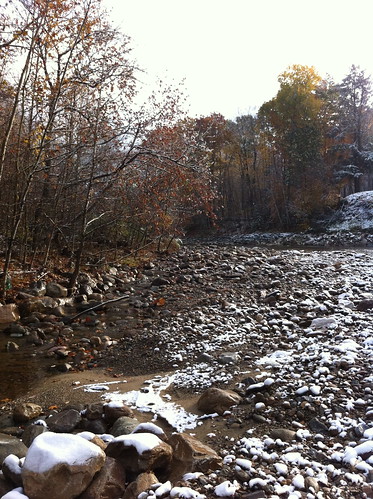
Later in the winter, of course, a lot of ice will form in and around the river. A river of this size will not freeze solid, though, and there will be at least some open water even during the coldest nights (in fact, to my knowledge, even the smaller creeks retain some liquid water under the snow all year).
One of the most welcome features of this early-season snow? No snow or ice built up on roads or paths.
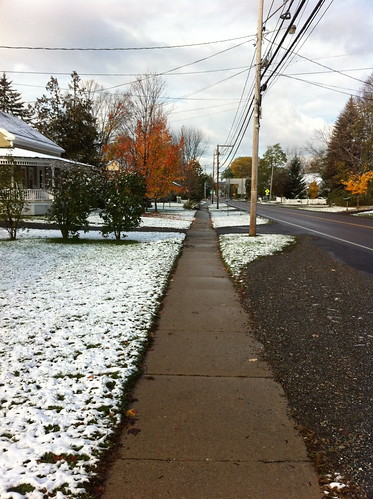
Last year's fall snow and cold temperatures brought some interesting features to Middlebury, described in this old blog post.
The ground holds its heat... for now. In a couple of months, the ground will freeze (unless, like last year, it is insulated by heavy snow before the weather gets cold). In the spring, the ground holds the chill as the air temperatures warm up, and the above trends are reversed - snow and ice hide in the hollows - and on the roads - when the trees and rooftops are released from the snow.

No comments:
Post a Comment